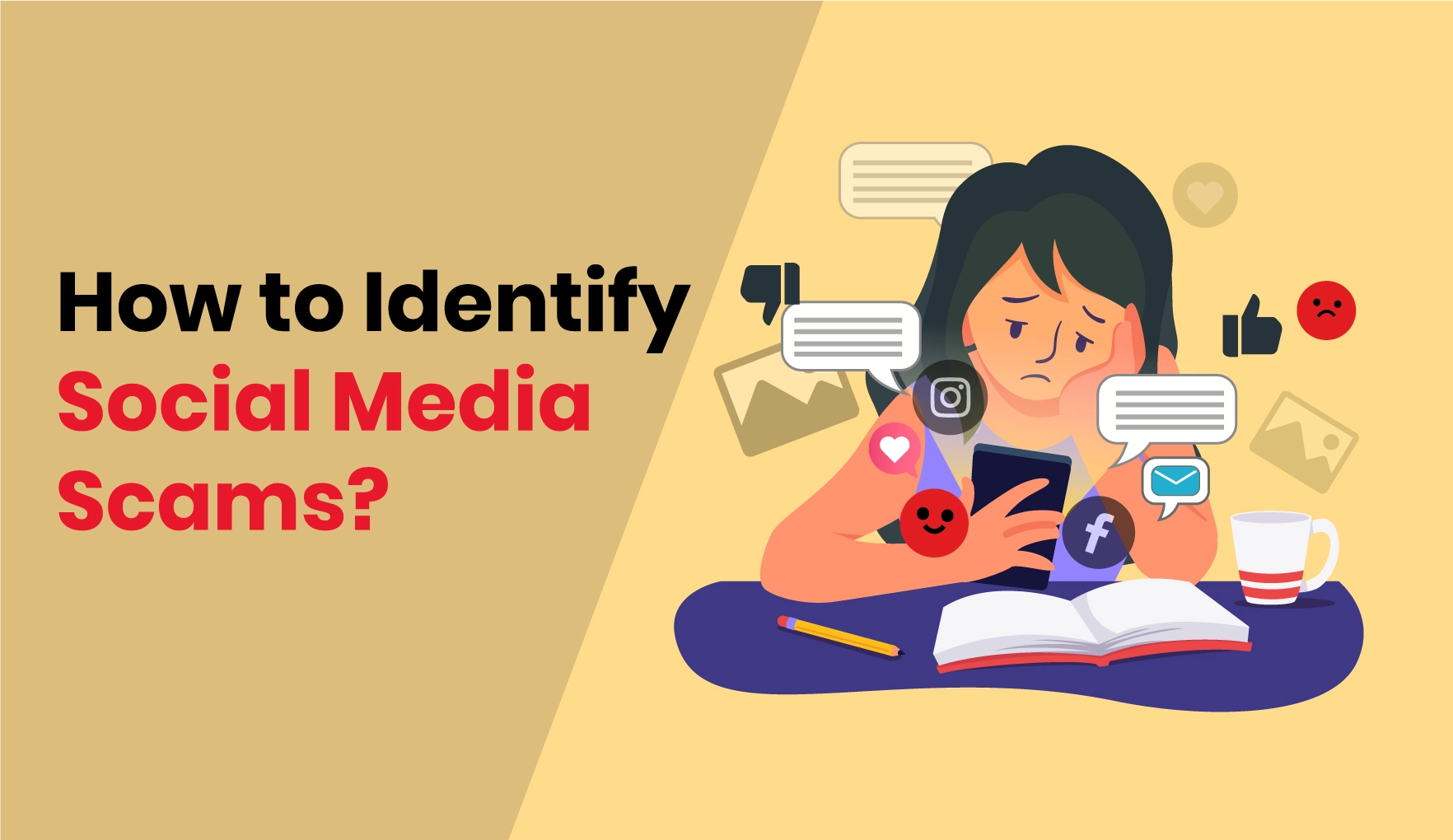Social Media Scams vs Legitimate Opportunities: How to Distinguish Between Them

Crooks attempts to steal your passwords, account numbers, or Social Security numbers through mail or text communications. If they have such information, the organization could gain access to your email ID, bank, or other accounts. They also plan to sell your information to other scammers. Every day, crooks launch thousands of phishing attacks like this, and they are frequently successful.
Scammers’ methods change regularly to keep up with current events or trends, but here are some common phishing email or text message tactics:
Phishing emails and SMS messages frequently create a story to persuade you to click on a link or open an attachment. You may obtain an unexpected email or text that is from a company you recognize or trust, like a bank, credit card, or utility company. It could also be from an online payment website or app. The communication could have come from a scammer.
Indicate that they’ve seen some unusual activity or login attempts but haven’t claimed there’s a problem with your account or payment information. There is no requirement to confirm any personal or financial information, but there is none.
Include an invoice you don’t recognize. It’s a fraud to want you to open a link to make a payment, but the link has a malware that claims you’re eligible to register for a government refund. It’s a scam to give a coupon for free things.
Forms of Social Media Scams
- Phishing – Malicious links may be embedded in direct messages, emails, stories, or organic postings and, when clicked, may infect devices with malware or redirect to websites that grab your login information.
- Quizzes and games – Finishing quizzes and playing games on social media are immensely popular. However, providing personal information in responses can attract some unscrupulous actors, even if the question or game is genuine.
- Romance – People may receive friend requests and messages from strangers, unaware that scammers run these profiles. These social engineering techniques abuse emotions to the extent that the victim unknowingly discloses vital personal or company information or sends money to the attractive stranger who fabricates an emergency issue.
- E-commerce – People might be led to legitimate-looking online stores and shops and purchase things without examining the platform’s validity. These phony websites collect sensitive information and then use it to perpetrate theft.
- Charity—Fake charity appeals are common, especially during times of high human interest, such as natural disasters or other significant events. These bogus charity sites, like fraudulent shopping sites, are set up to collect sensitive information from visitors.
- Job offers – While there is proof that social media recruitment is real, there are sadly many bogus jobs with typically overstated offers to grab the curiosity of enthusiastic job seekers. Many people do not verify the legitimacy of these positions through the recruiter or client website; instead, they fill out web forms.
- Influencers – They rely significantly on brand collaborations, and real partnerships may be extremely advantageous to both parties. However, among many verified offers will be some phishing links or bogus brand promotions, making them targets for cybercriminals.
- Investment—People are sometimes contacted with promises of huge returns on investments. After committing to the investment scheme, they are usually faced with silence, with no trace of the fraudulent broker.
Four Strategies for Avoiding Phishing
- Use security software to protect your PC. Set the software to update to deal with any new security concerns automatically.
- Protect your phone by setting the software to update automatically. You may gain vital security protection from these updates.
- Use a combination of factors to secure your accounts. This is referred to as multi-factor authentication. The extra credentials required to log into your account are classified into three types:
- Something you know, such as a password, a PIN, or the answer to a security question.
- Something you possess, such as a one-time verification passcode received by text, email, an authenticator app, or a security key
- Something you are, like a facial, fingerprint, or retinal scan
If fraudsters obtain your login and password, multi-factor authentication makes it tougher for them to log in to your accounts.
4 Back up your data to keep it safe. Back up the data on your computer to an external hard drive or the cloud.
Tips to Keep in Mind
Look for the following characteristics in a social media profile or message to help you evaluate whether it is genuine or not.
- The account’s maturity
- The number of followers an account has.
- Errors in spelling and punctuation.
- Unnatural phrasing
- There needs to be more adequate formatting.
- If the profile appears to be familiar.
- Messages with links that were not requested.
- Requests for financial assistance.
- Posts, advertisements, or redirection to stores with enticing bargains.
- Requests for communication via text message or phone.
What Must You Do If You Are Suspect of a Phishing Attack?
If you get an email or a text asking you to open a link or open an attachment, please respond as follows:
Do I have a relationship with the company or the individual who contacted me?
If the response is “No,” you may be the victim of a phishing scam. Return to the How to Recognize Phishing section and check for signs of a phishing scam. If you see one, report it, and then delete it.
If you answered “Yes,” contact the company via their phone number or website that you know is legitimate, rather than the information in the email. Attachments and links may contain malicious software.
Conclusion
It is tough to avoid the scammers who abound on social media. You can, however, keep your sensitive information protected and prevent becoming a victim of cybercrime if you are cautious and pay close attention. Consider putting a credit freeze and a fraud alert on your accounts to protect your credit further.
Before changing your password and enabling MFA, obtain a password reset email from the specific provider, log out of all sessions, and update the email ID and phone number linked to your account. If you pay money to a scammer, contact your bank to cancel the transaction. Your local police department may also have a cyber fraud unit where you can report the offense.

 4.1/5.0
4.1/5.0 2.6/5.0
2.6/5.0
 3.5/5.0
3.5/5.0